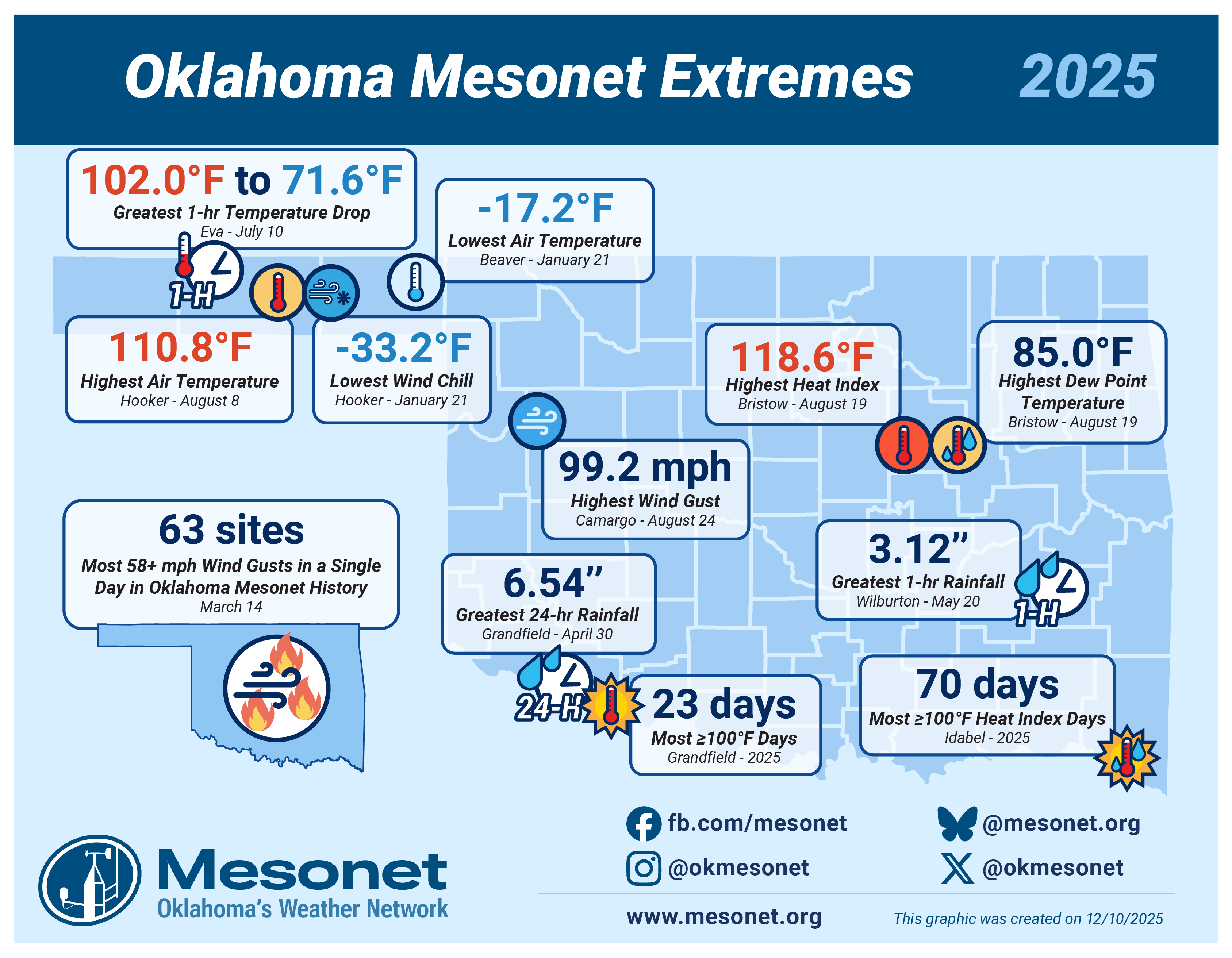Warm and Dry November Drives Drought Expansion
November 2025 was a warm and mostly dry month across Oklahoma, much like the climatological fall season as a whole (September 1–November 30). Those conditions allowed drought to flourish across the southern half of the state, only a few months after Oklahoma had enjoyed a mostly drought-free summer. The dryness is expected to persist through the end of the year and may even expand. Some rain and bouts of severe weather did occur, including a weak tornado near Broken Arrow on November 20.
October Heat Gives Way to Fall Chill
The summer warmth that lingered through much of September carried into the first three weeks of October before Mother Nature finally switched the channel to a more autumnal pattern during the month’s final 10 days. Highs that had routinely climbed into the 80s and 90s during those first three weeks fell into the 60s and 70s — with 50s appearing by month’s end. The season’s first freeze occurred on Oct. 19 in the Panhandle, followed by a more widespread freeze during the final four days of the month.
September Sees Summer Comeback
The early taste of fall that delighted many Oklahomans at the end of August lingered through the first week of September before summer grabbed the remote control again. Gone were the autumn-like highs in the 60s and 70s, replaced by the more customary 80s and 90s. Despite that return to normalcy, Mother Nature couldn’t resist one more twist: for the first time since 2008, the Oklahoma Mesonet failed to record a single 100-degree temperature during September. The last triple-digit highs—likely the year’s final—came back on Aug. 28 at several sites in southwest Oklahoma.
August Brings Early Summer Exit
August 2025 pulled a fast one on Oklahoma. Instead of the typical late-summer swelter, the month ended with a taste of fall as two powerful cold fronts shoved aside the heat. The final week brought gray skies, steady rain and highs stuck in the 60s and 70s — more like October than August. The chill was strong enough to break multiple records, including several record-low maximums and even a few outright record lows.
OK-FIRE Fall 2025 Workshops
OK-FIRE is pleased to announce its fall workshop schedule, which will consist of two in-person options in Lawton and Bartlesville and one virtual option.
Summer Reclaims Headlines During July
After months dominated by rain and severe weather, summer finally reclaimed the spotlight in Oklahoma during July. The state’s wet streak ended, replaced by rising heat and drying conditions. A lone tornado touchdown near Vance AFB extended the tornado streak to five consecutive months, bringing the 2025 total through July to 88. Sweltering July heat held off for much of the month but surged during the final two weeks—only to be abruptly cut short by an unusually strong cold front on July 31.
June Rains End Drought
Oklahoma’s big weather stories this spring overwhelmingly involved tornadoes and heavy rains — and June was no exception. The month finished as the sixth-wettest June on record, at 7.22 inches, nearly 3 inches above normal. The preliminary tornado count swelled to 25, the second-highest for the month on record. But there was at least one silver lining to all that active weather: June saw drought completely eliminated from Oklahoma for the first time in nearly six years.
